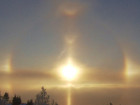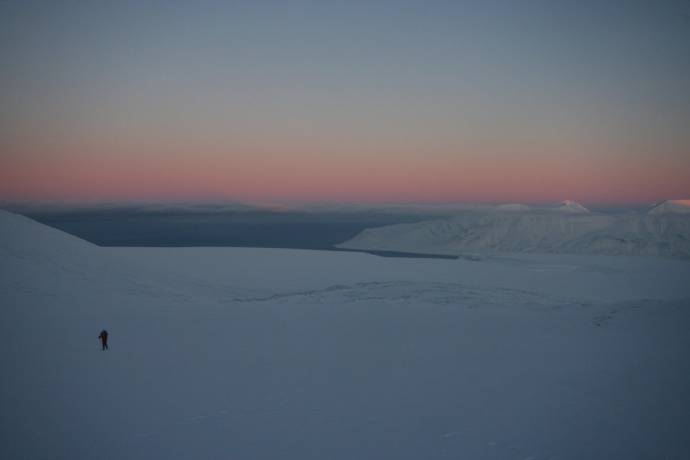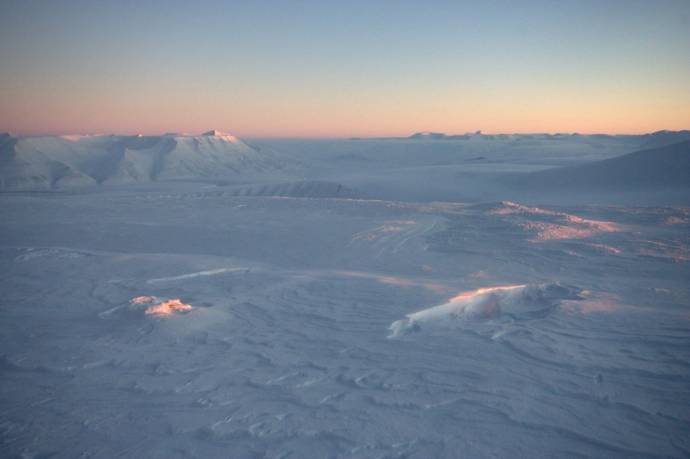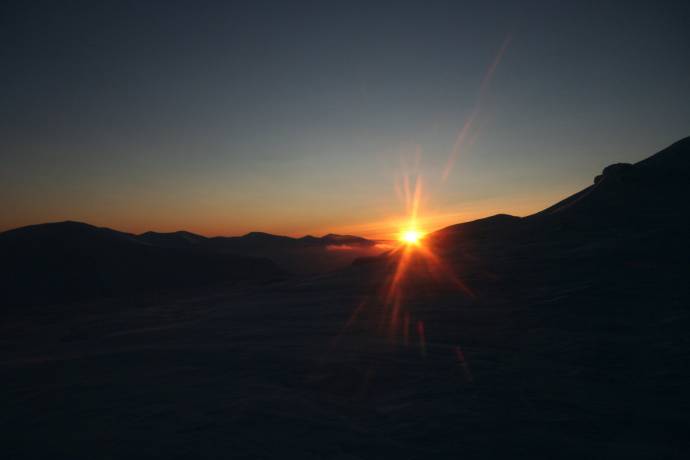|
Atmospheric Scattering
|
|
| 747823 | Date: Wednesday, 10.04.2013, 07:02 | Message # 1 |
|
Observer
Group: Newbies
 United States
United States
Messages: 1
Status: Offline
| I've been trying to understand atmospheric scattering and I think I understand it quite well now, and am planning to create a HLSL scattering shader, but I have a question still that I cannot really understand.
When looking /away/ from the sun during sunset, why is the horizon still blue, if it is very thick over there? Why is the horizon more orange as the angle is closer to the sun even though it is the same thickness as facing away from the sun? Intuitively it seems to me that in every area we look at should only depend on thickness. I know that as the light has traveled far through the atmosphere, much of it has already been scattered, but would not the ratio of what is remaining be inverse to the ratio of what is scattered out?
The only logical solution I can think of is: Blue light is more likely to bounce at a very steep angle (i.e. 120 degrees) from its intitial direction than red light is, in addition to being more likely to bounce at all. For example assume 10 different bounces of red light and blue light. Would the blue ones have a more even distribution of their output angles relative to their input angle than the red ones? Would the angles of bounces from red be weighed somewhat in the direction of the input? If that is correct, could anyone explain why, because I do not really understand that at all.
Also I noticed this does not occur in the scattering model space engine uses. I was actually unsure for a while if it occurs in real life, but then I looked at the sky a few days in a row during the evening and it is definitely much more blue on the opposite side from the sun, even though the atmosphere is just as thick over there.
Hope someone has the answer. 
Edited by 747823 - Wednesday, 10.04.2013, 07:04 |
| |
| |
| midtskogen | Date: Wednesday, 10.04.2013, 07:33 | Message # 2 |
 Star Engineer
Group: Users
 Norway
Norway
Messages: 1674
Status: Offline
| Quote (747823) Also I noticed this does not occur in the scattering model space engine uses. I was actually unsure for a while if it occurs in real life, but then I looked at the sky a few days in a row during the evening and it is definitely much more blue on the opposite side from the sun, even though the atmosphere is just as thick over there.
Not a direct answer, but I've witnessed a total eclipse of the sun when the sun was relatively high in the sky and I recall that during totality the sky towards the horizon was closer to red in all directions. By "closer to red" I probably mean yellow, but definitely not blue. The sky looked a bit like just after sunset in all directions.
EDIT: Could the explanation for your observation simply be that it's brighter towards the sunset, so the red seems more dominating. And secondly, when you look away from the sunset you look towards an area where the sun has set, where nothing gets directly illuminated by the direct red light from the sun, while towards the sun clouds and particles in the air are bathed in direct, red light. So in principle the horizon is equally red in all directions, but due to secondary effects it looks differently.
NIL DIFFICILE VOLENTI

Edited by midtskogen - Wednesday, 10.04.2013, 08:03 |
| |
| |
| Watsisname | Date: Wednesday, 10.04.2013, 08:06 | Message # 3 |
 Galaxy Architect
Group: Global Moderators
 United States
United States
Messages: 2613
Status: Offline
| Hi there 747823, nice to have you on the forums! 
Since your question involves the direction of the light source, this is a clue to the answer.
Basically you're seeing the exact same phenomenon (the preferential scattering of blue light), but from a different perspective. By looking away from the sun you're seeing more of the bluer photons that get preferentially scattered out of the light path, and when you look toward the sun you're seeing the redder photons that did not get scattered. So the color of the sky depends not only on the amount of scattering particles along that line of sight, but also on the geometry of the light source.
Quote Not a direct answer, but I've witnessed a total eclipse of the sun when the sun was relatively high in the sky and I recall that during totality the sky towards the horizon was closer to red in all directions. By "closer to red" I probably mean yellow, but definitely not blue. The sky looked a bit like just after sunset in all directions.
I have seen this phenomenon in video/photos and can't wait to see it in real life! The reason this happens is because you're standing in the shadow of the moon, so there is little direct illumination for the sky overhead, but the sky far away is still illuminated. Therefore when looking toward the horizon you are primarily seeing the less-scattered red photons from far away, just like a sunset, but in all directions.

Edited by Watsisname - Wednesday, 10.04.2013, 08:07 |
| |
| |
| midtskogen | Date: Wednesday, 10.04.2013, 09:22 | Message # 4 |
 Star Engineer
Group: Users
 Norway
Norway
Messages: 1674
Status: Offline
| Still, I'd say that the difference in colour is not very significant. I need to dig a bit in our photo album... Below are a couple of shots taken on the first day when the sun peaks above the horizon after a four month polar night (2007-02-16). The sun stays above the horizon by a fraction of a degree for a few hours, plenty of time to experience and photograph the effects of being precisely on Earth's terminator.
First looking north, away from the sun. The sky towards the horizon is red. Note how the mountain peaks dips into direct red light.

Then looking east. Similar colours. Again note the mountain peaks in the background and also the foreground sastrugi dipped in red light. The illumination is pretty much perfectly horizontal.

Finally, looking south towards the sun.

Are the colours of the sky really that different?Added (10.04.2013, 12:22)
---------------------------------------------
Quote (Watsisname) I have seen this phenomenon in video/photos and can't wait to see it in real life!
I total solar eclipse with pass directly over the place in the photos above in 2015. The only total eclipse in Norway in my lifetime...
NIL DIFFICILE VOLENTI

|
| |
| |
| Watsisname | Date: Wednesday, 10.04.2013, 09:38 | Message # 5 |
 Galaxy Architect
Group: Global Moderators
 United States
United States
Messages: 2613
Status: Offline
| In your case, not really, but often they are. There is a lot of variability in the colors from one location and one sunset to another. It depends on things such as the elevation of the sun, the amount of particulates and water vapor in the atmosphere, and even clouds. In your photos the atmosphere is pretty clean (common for cold and high-altitude locations), so the sky around the sun isn't very red. Compare that to a sunset like this:

On a related note, has anyone ever seen a volcanic sunset? I saw one after the eruption of a volcano in Alaska a few years back. The sunset had absolutely no red to it -- instead the western horizon was brilliant golden yellow, with a strange purple color above that, deep blue everywhere else, and crepuscular rays from distant clouds stretching all the way across the sky to the eastern horizon. It was absolutely amazing, I wish I had had a camera with me. 

|
| |
| |
| midtskogen | Date: Wednesday, 10.04.2013, 09:57 | Message # 6 |
 Star Engineer
Group: Users
 Norway
Norway
Messages: 1674
Status: Offline
| The pictures were taken at an altitude of about 800 m, and the temperature was -20C or so. So the air can't hold much water. On the other hand, the starry sky is fairly unimpressive there even though the light pollution is low, and in that respect the air appears less clean than in the tropics (beside the fact that the tropics has a better view of the Milky Way).
Wouldn't the cleaner the air, the less red it will turn?
The purple in your picture looks very much like a volcanic sunset (but there might be no connection). Compare with the picture below. I don't think there were any eruptions that could explain it, but when I took the picture I wrote that the temperature in the stratosphere was unusually low and similar sights were reported in other places in Europe.
Example of volcanic sunset: http://www.atoptics.co.uk/atoptics/sunvolc.htm
NIL DIFFICILE VOLENTI

Edited by midtskogen - Wednesday, 10.04.2013, 11:21 |
| |
| |
| Watsisname | Date: Wednesday, 10.04.2013, 10:25 | Message # 7 |
 Galaxy Architect
Group: Global Moderators
 United States
United States
Messages: 2613
Status: Offline
| Yeah, more scatterers in the atmosphere generally means a redder sunset.
I'm not sure if the image I linked is a volcanic sunset or not (I just grabbed it from google), though it certainly may be. Yours definitely has the looks of one. That's weird though that you report the stratospheric temperature was abnormally low -- volcanic aerosols heat the stratosphere. So I don't know what's going on there.

|
| |
| |
| HarbingerDawn | Date: Wednesday, 10.04.2013, 10:32 | Message # 8 |
 Cosmic Curator
Group: Administrators
 United States
United States
Messages: 8717
Status: Offline
| Quote (Watsisname) I don't know what's going on there.
Obviously it was aliens. Or HAARP. Maybe HAARP is actually run by aliens!
All forum users, please read this!
My SE mods and addons
Phenom II X6 1090T 3.2 GHz, 16 GB DDR3 RAM, GTX 970 3584 MB VRAM
|
| |
| |
| Watsisname | Date: Wednesday, 10.04.2013, 10:34 | Message # 9 |
 Galaxy Architect
Group: Global Moderators
 United States
United States
Messages: 2613
Status: Offline
| Chemtrails. :U

|
| |
| |
| midtskogen | Date: Wednesday, 10.04.2013, 10:46 | Message # 10 |
 Star Engineer
Group: Users
 Norway
Norway
Messages: 1674
Status: Offline
| I took the picture 2008-02-19 and for "sunset february 2008 stratosphere" Google produced this page.
Quote (HarbingerDawn) Obviously it was aliens. Or HAARP. Maybe HAARP is actually run by aliens!
Red Sky.
NIL DIFFICILE VOLENTI

Edited by midtskogen - Wednesday, 10.04.2013, 10:47 |
| |
| |
| Watsisname | Date: Wednesday, 10.04.2013, 11:28 | Message # 11 |
 Galaxy Architect
Group: Global Moderators
 United States
United States
Messages: 2613
Status: Offline
| Ahhhh, PSC's, that makes sense. 
Do you ever see the much higher-altitude version of those -- the Polar Mesospheric Clouds? They're really eerie. I've never seen them but I'm a little too far south. Apparently they're getting more common and spreading farther from the poles in recent years though...

Edited by Watsisname - Wednesday, 10.04.2013, 11:29 |
| |
| |
| midtskogen | Date: Wednesday, 10.04.2013, 12:03 | Message # 12 |
 Star Engineer
Group: Users
 Norway
Norway
Messages: 1674
Status: Offline
| Quote (Watsisname) Do you ever see the much higher-altitude version of those -- the Polar Mesospheric Clouds? They're really eerie. I've never seen them but I'm a little too far south. Apparently they're getting more common and spreading farther from the poles in recent years though...
Yes, but they're not as common as the mother of pearl clouds (which are visible several times every year, mostly in winter). At least they're common here in the east of Norway when strong winds pass over the mountains of central Norway.
Noctilucent clouds are (only?) seen in the twilight of the summer nights here in the south of the country (except perhaps around midsummer when it's too bright). I suppose they're visible further north as well, but then only in spring/late summer when there is no midnight sun, so the season for seeing them is shorter. Since the summer makes stargazing impossible, noctilucent clouds can serve as something that we can look for instead while waiting for the proper nights to return. 
NIL DIFFICILE VOLENTI

Edited by midtskogen - Wednesday, 10.04.2013, 12:08 |
| |
| |